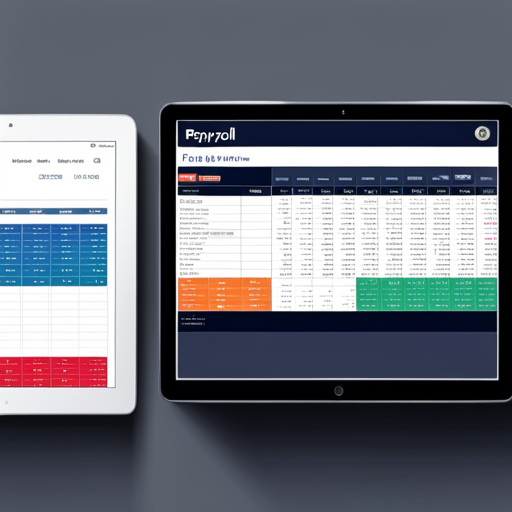Are you tired of dealing with payroll mistakes and inaccuracies? Look no further!
In this article, we will provide you with valuable tips and tricks to ensure error-free payroll calculations.
Understanding payroll regulations and requirements is crucial, and we will guide you through the process.
You will learn how to organize and maintain accurate employee records, which is essential for precise payroll calculations.
Calculating wages, taxes, and deductions can be complex, but we will break it down for you in a simple and straightforward manner.
Additionally, we will explore the benefits of automating payroll processes with software solutions, saving you time and effort.
To ensure ongoing accuracy, conducting regular audits and reviews is vital, and we will show you how to do it effectively.
With our detailed and precise guidance, you will become a payroll calculation pro in no time!
Key Takeaways
- Understanding payroll regulations and requirements is crucial to avoid penalties and stay updated with changes.
- Organizing and maintaining accurate employee records is essential for compliance and data privacy.
- Calculating wages, taxes, and deductions accurately requires considering overtime, tax laws, and various deductions.
- Automating payroll processes with software solutions can save time, ensure accuracy, and streamline operations.
Understanding Payroll Regulations and Requirements
Understanding payroll regulations and requirements is essential for ensuring error-free payroll calculations. It allows you to comply with legal obligations and avoid potential penalties.
Staying up to date with compliance updates is crucial because regulations can change frequently. By investing in payroll compliance training, you can ensure that you have a thorough understanding of the rules and guidelines that govern payroll calculations.
This training will help you navigate complex issues such as tax withholding, overtime pay, and employee classification. It will also help you understand the legal obligations related to benefits, deductions, and record-keeping.
By having a deep understanding of payroll regulations and requirements, you can confidently perform accurate calculations. This minimizes the risk of errors and potential legal consequences.
Organizing and Maintaining Accurate Employee Records
To ensure your employee records are accurate and well-organized, it’s helpful to implement a system that keeps track of important information. Employee data management is crucial for error-free payroll calculations.
Start by creating a secure and centralized database where you can store all employee information, including personal details, job history, and performance evaluations. Regularly update this database to ensure accuracy and completeness.
Additionally, establish a process for collecting and maintaining important documents such as tax forms, contracts, and certifications. Properly organizing these records will save you time and effort when it comes to payroll calculations and audits.
It is also vital to ensure data privacy by implementing strict access controls and encryption measures. Regularly review and update your data privacy policies to comply with regulations and protect sensitive employee information.
By following these tips, you can maintain accurate and well-organized employee records, leading to error-free payroll calculations.
Calculating Wages, Taxes, and Deductions
Efficiently calculating employee wages, taxes, and deductions requires a thorough understanding of payroll processes and meticulous record-keeping. To ensure accuracy, it is crucial to incorporate overtime calculations and payroll accuracy checks into your calculations.
When calculating wages, consider any overtime hours worked and apply the appropriate overtime rate. Double-check that all hours are accurately recorded and accounted for.
Additionally, when calculating taxes and deductions, review the latest tax laws and regulations to ensure compliance. Take into account federal, state, and local taxes, as well as any applicable deductions such as health insurance premiums or retirement contributions.
Regularly perform payroll accuracy checks to identify any discrepancies or errors before processing payroll. These measures will help maintain error-free payroll calculations and ensure precision in your payroll processes.
Automating Payroll Processes with Software Solutions
Automating payroll processes with software solutions can bring numerous benefits to your business. By integrating payroll software into your operations, you can significantly reduce the time and effort spent on manual calculations. This not only saves time but also ensures error-free payroll calculations.
Payroll software accurately calculates wages based on hours worked, taking into account overtime and different pay rates. It also automatically calculates taxes and deductions, such as income tax, Social Security, and healthcare contributions. This ensures compliance with all legal requirements and eliminates the risk of human error.
In addition to calculating wages and deductions, payroll software allows for easy tracking of employee benefits, such as vacation and sick days. It also automates the generation of pay stubs and tax forms, making the entire payroll process more efficient.
By streamlining your payroll operations with software, you can save time, increase efficiency, and ensure precision in your payroll calculations. Implementing payroll software is a smart investment that can greatly benefit your business.
Conducting Regular Audits and Reviews for Accuracy
To ensure the accuracy of your payroll processes, it is important to regularly conduct audits and reviews. Review your payroll calculations periodically to identify errors or discrepancies. Work closely with external payroll vendors to gain an unbiased perspective and identify potential issues. Implement internal controls, such as segregating duties, implementing approval processes, and regularly monitoring and reconciling payroll data. By conducting regular audits and reviews, you can promptly address any errors or issues, ensuring accurate and error-free payroll processes. This attention to detail saves time and money and maintains the trust and satisfaction of your employees.






